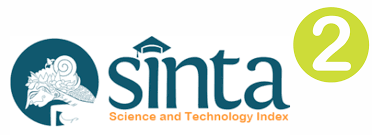Exploring the nexus of artificial intelligence, fake news and defense strategy
Abstract
The advancement of artificial intelligence (AI) has significantly impacted digital communication, including the creation and dissemination of disinformation. Technologies such as deepfakes, chatbots powered by natural language processing (NLP), and generative algorithms enable the production of false information that is challenging to distinguish from reality, posing a threat to information security and global stability. In the defense context, AI-driven disinformation can be weaponized in information warfare, undermining public trust, creating social disorientation, and weakening national security strategies. This study examines how AI is utilized to spread disinformation and its implications for defense strategies. Through case studies and literature analysis, the research highlights the urgent need for robust mitigation measures, including the development of AI-based detection technologies, the enhancement of digital literacy, and global collaboration in regulating the use of AI. The findings offer insights into the strategic threats posed by AI to defense systems, while providing recommendations to strengthen resilience against AI-driven disinformation attacks.
Keywords
Full Text:
PDFReferences
Azam, A. (2021). Role Of Artificial Intelligence In Defence Strategy: Implications For Global And
National Security. Strategic Studies. Https://Doi.Org/10.53532/Ss.041.01.0058.
Benzie, A., & Montasari, R. (2022). Artificial Intelligence And The Spread Of Mis-And
Disinformation. In Artificial Intelligence And National Security (Pp. 1-18). Cham: Springer
International Publishing.
Burton, J., & Soare, S. (2019). Understanding The Strategic Implications Of The Weaponization Of
Artificial Intelligence. 2019 11th International Conference On Cyber Conflict (Cycon), 900, 1-
Https://Doi.Org/10.23919/CYCON.2019.8756866.
Cai, C., & Zhang, L. (2024). Escaping The Trap: Adapting The U.S.-China Arms Race To The
Dynamics Of Artificial Intelligence. North South Journal Of Peace And Global Studies.
Https://Doi.Org/10.47126/Nsjpgs.V2i1.02.
Deepak, P. (2023). AI And Fake News: Unpacking The Relationships Within The Media Ecosystem.
Communication & Journalism Research, 12(1), 15-32.
Elhoussainy, H. A. (2024). The Role Of Artificial Intelligence Techniques In Spreading Rumors And
Fake News, And Their Effect On National Security, 2024(30), 1-59.
Gaire, U. (2023). Application Of Artificial Intelligence In The Military: An Overview. Unity Journal.
Https://Doi.Org/10.3126/Unityj.V4i01.52237.
Hasimi, L., & Poniszewska-Marańda, A. (2024). Detection Of Disinformation And Content Filtering
Using Machine Learning: Implications To Human Rights And Freedom Of
Jain, R. (2023). Detection And Provenance: A Solution To Deepfakes?. Journal Of Student Research.
Https://Doi.Org/10.47611/Jsrhs.V12i3.5122.
Kaczmarek, K., Karpiuk, M., & Melchior, C. (2024). Disinformation As A Threat To State Security.
Przegląd Nauk O Obronności, 9(20), 45-54.
Karaş, Z. (2024). Effects Of AI-Generated Misinformation And Disinformation On The Economy.
Düzce Üniversitesi Bilim Ve Teknoloji Dergisi.
Karinshak, E., & Jin, Y. (2023). AI-Driven Disinformation: A Framework For Organizational
Preparation And Response. Journal Of Communication Management.
Https://Doi.Org/10.1108/Jcom-09-2022-0113.
Karthikeyan, S. (2024). Rising Threat Of AI-Driven Cybersecurity Attacks: Implications For National
Security. International Journal For Research In Applied Science And Engineering Technology.
Https://Doi.Org/10.22214/Ijraset.2024.64042.
Kertysova, K. (2018). Artificial Intelligence And Disinformation. Security And Human Rights.
Https://Doi.Org/10.1163/18750230-02901005.
Kozik, R., Pawlicka, A., Pawlicki, M., Choraś, M., Mazurczyk, W., & Cabaj, K. (2024). A Meta-
Analysis Of State-Of-The-Art Automated Fake News Detection Methods. IEEE Transactions
On Computational Social Systems, 11, 5219-5229.
Https://Doi.Org/10.1109/TCSS.2023.3296627.
Kumar, A., & Taylor, J. W. (2024). Feature Importance In The Age Of Explainable AI: Case Study
Of Detecting Fake News & Misinformation Via A Multi-Modal Framework. European Journal
Of Operational Research, 317(2), 401-413.
Lai, C., & Guo, Y. (2024). Tracking Of Disinformation Sources: Examining Pages And Urls. IEEE
Transactions On Computational Social Systems, 11, 6242-6253.
Https://Doi.Org/10.1109/TCSS.2024.3391626.
Landon-Murray, M., Mujkic, E., & Nussbaum, B. (2019). Disinformation In Contemporary U.S.
Foreign Policy: Impacts And Ethics In An Era Of Fake News, Social Media, And Artificial
Intelligence. Public Integrity, 21, 512 - 522.
Https://Doi.Org/10.1080/10999922.2019.1613832.
Nasiri, S., & Hashemzadeh, A. (2025). The Evolution Of Disinformation From Fake News
Propaganda To AI-Driven Narratives As Deepfake. Journal Of Cyberspace Studies, 9(1), 229-
Nazar, S., & Bustam, M. R. (2020, July). Artificial Intelligence And New Level Of Fake News. In
IOP Conference Series: Materials Science And Engineering (Vol. 879, No. 1, P. 012006). IOP
Publishing.
Okolo, C. (2024). African Democracy In The Era Of Generative Disinformation: Challenges And
Countermeasures Against AI-Generated Propaganda. Arxiv, Abs/2407.07695.
Https://Doi.Org/10.48550/Arxiv.2407.07695.
Paredes, D. (2023). Strategies Based On Artificial Intelligence For The Detection Of Fake News.
AWARI. Https://Doi.Org/10.47909/Awari.58.
Radovanović, M., Petrovski, A., Behlić, A., Chaari, M. Z., Hashimov, E., & Fellner, R. (2024).
Unleashing Autonomous Forces: Integrating AI-Driven Drones In Modern Military Strategy.
Системи Управління, Навігації Та Зв’язку.
Santos, F. (2023). Artificial Intelligence In Automated Detection Of Disinformation: A Thematic
Analysis. Journalism And Media. Https://Doi.Org/10.3390/Journalmedia4020043.
Shoaib, M., Wang, Z., Ahvanooey, M., & Zhao, J. (2023). Deepfakes, Misinformation, And
Disinformation In The Era Of Frontier AI, Generative AI, And Large AI Models. Arxiv,
Abs/2311.17394. Https://Doi.Org/10.48550/Arxiv.2311.17394.
Vysotska, V. (2024). Information Technology For Recognizing Propaganda, Fakes And
Disinformation In Textual Content Based On Nlp And Machine Learning Methods. Radio
Electronics, Computer Science, Control. Https://Doi.Org/10.15588/1607-3274-2024-2-13.
DOI: http://dx.doi.org/10.30813/bricolage.v11i2.6762
Refbacks
- There are currently no refbacks.
Accredited by:
Indexed by:
UNIVERSITAS BUNDA MULIA PRESS
PROGRAM STUDI MAGISTER ILMU KOMUNIKASI
Lantai 3 Ruang Pascasarjana - Universitas Bunda Mulia
Jl. Lodan Raya No. 2, Ancol – Jakarta Utara 14430, Indonesia
Telp: +62 21 692 9090 ext.1317
Email: bricolage@ubm.ac.id; bricolage.mikom@gmail.com
This work is licensed under a Creative Commons Attribution-ShareAlike 4.0 International License.
View My Stats




























.png)

